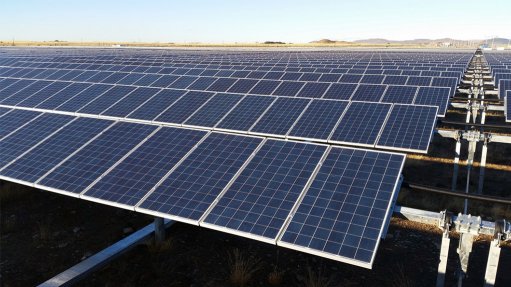
The South African Photovoltaic Industry Association (SAPVIA) has announced a “bold” five-point plan for the solar photovoltaic (PV) industry to drive industrialisation, create jobs, and contribute to economic growth.
Speaking at the Energy Indaba held at Gallagher Estate in Midrand, on Friday, SAPVIA chairperson Davin Chown highlighted solar energy as an untapped resource that can be used in ways that deliver economic benefits across the depth and breadth of South Africa.
“South Africa boasts an abundance of solar energy and is regarded as having some of the best solar resources globally all year round. It is an underexploited and underutilized indigenous resource with significant carbon reduction, water saving and economic development contributions,” he said.
Further, solar PV is a free-fuel technology that can be deployed with relative ease all across South Africa and deliver benefits to economically distressed communities and areas where industries are closing down.
Importantly, solar PV is also now the cheapest source of new power generation technology, “something that cannot be ignored”, according to Chown.
With this in mind Sapvia believes that solar has the ability to foster new project ownership regimes – from large utility scale projects to community-owned projects.
“There is a desperate need to reignite South Africa’s economic growth. This can only be done through constructive collaborative partnerships between all social partners, with the objective of delivering benefits to communities across South Africa,” he averred.
PLAN
In recognising the need to build new South African independent power producers (IPPs) and support a new generation of industrialists, in particular black industrialists in the industry, SAPVIA commits to work with government to build out 1 500 MW of PV a year, which will simultaneously deliver 1 380 carbon dioxide equivalent tonnes of carbon emissions reductions and thereby contribute to South Africa’s emissions reductions targets.
SAPVIA’s commitment will include facilitating the creation of South African solar IPPs and small and medium-sized enterprises - in particular women- and youth-owned businesses – support the creation of new black industrialists in the sector and promote investment and funding to achieve these commitments.
SAPVIA, in working with government, will commit to deliver 55 000 new local jobs in the industry by 2025. This will be done through skills development partnerships with the Department of Higher Education and Training through internationally recognised institutions, such as the South African Renewable Energy Technology Centre and the Energy and Water Sector Education and Training Authority.
The plan includes SAPVIA championing the implementation of solar PV in the renewable energy development zones, mining areas that are in decline and special economic zones, and launching the organisation’s Solar Industry Development Plan and Energy Transition Programme.
SAPVIA believes that through these commitments, the organisation and its members will contribute to igniting economic growth and development.
SAPVIA further called on government to create an enabling environment and commit to a firm, consistent roll-out of renewable energy to unlock the potential that solar and other renewables have to offer South Africa by providing the policy and programme consistency needed and actively partnering with the solar sector to build off the current renewable industry growth.
Government should also aim to build a long-term winning partnership with the broader renewable energy industry for the benefit of South Africa and its people, according to SAPVIA.
“There are just under 1 500 MW of small and medium-sized PV projects developed and awaiting permissioning. It is clear that this sector is ready for immediate roll-out and can drive much-needed industrialization, job creation and economic growth,” Chown said.